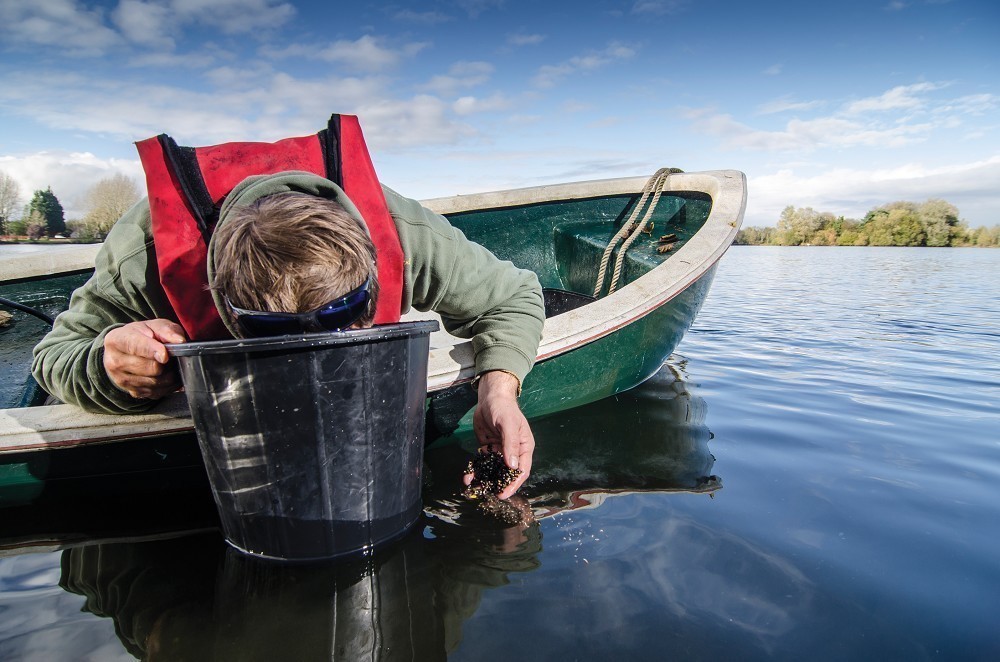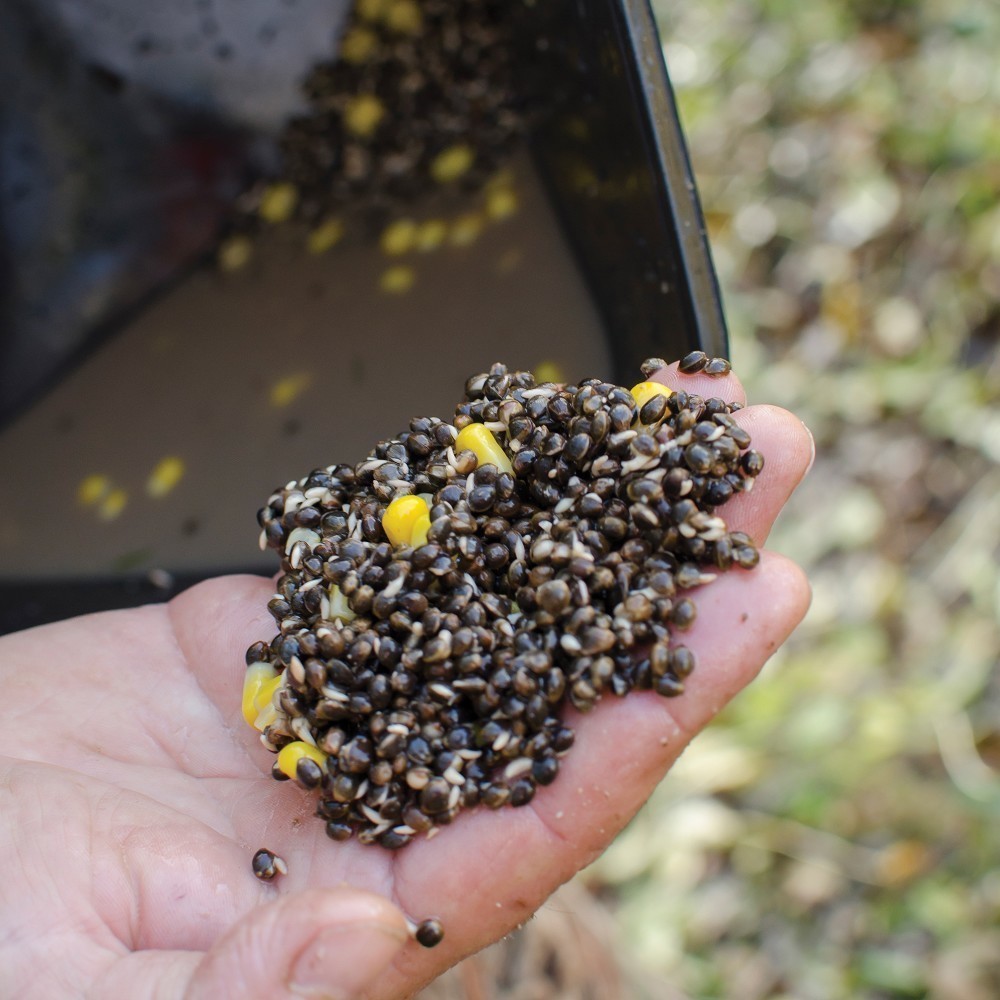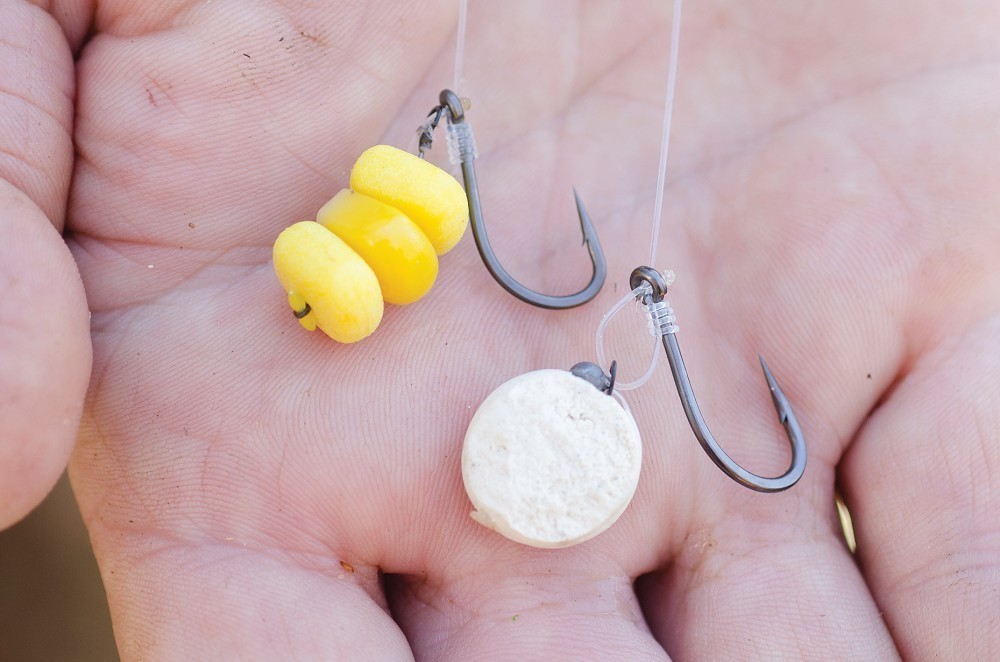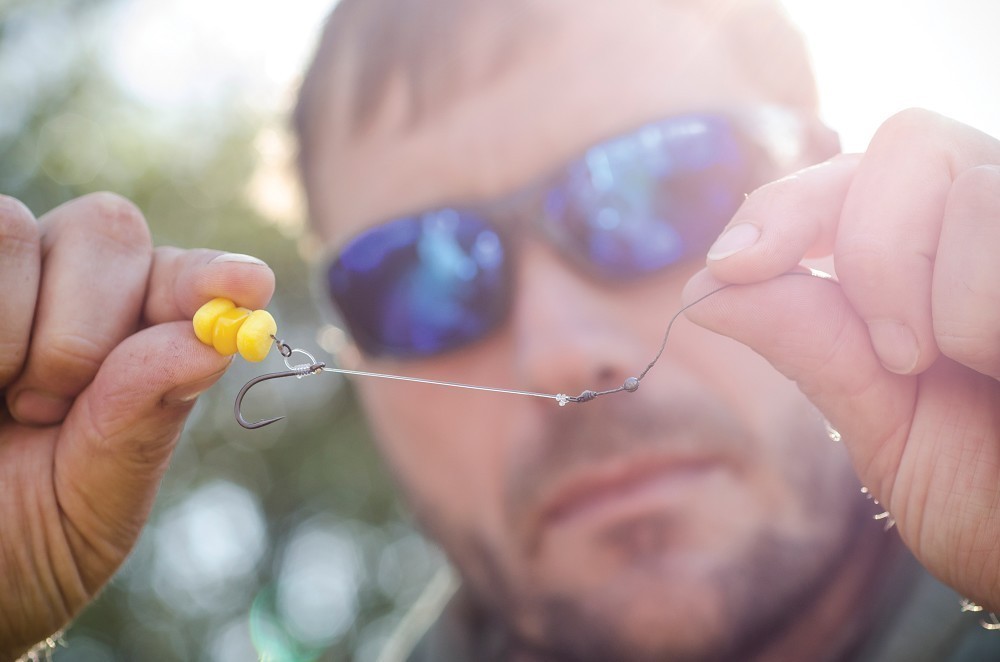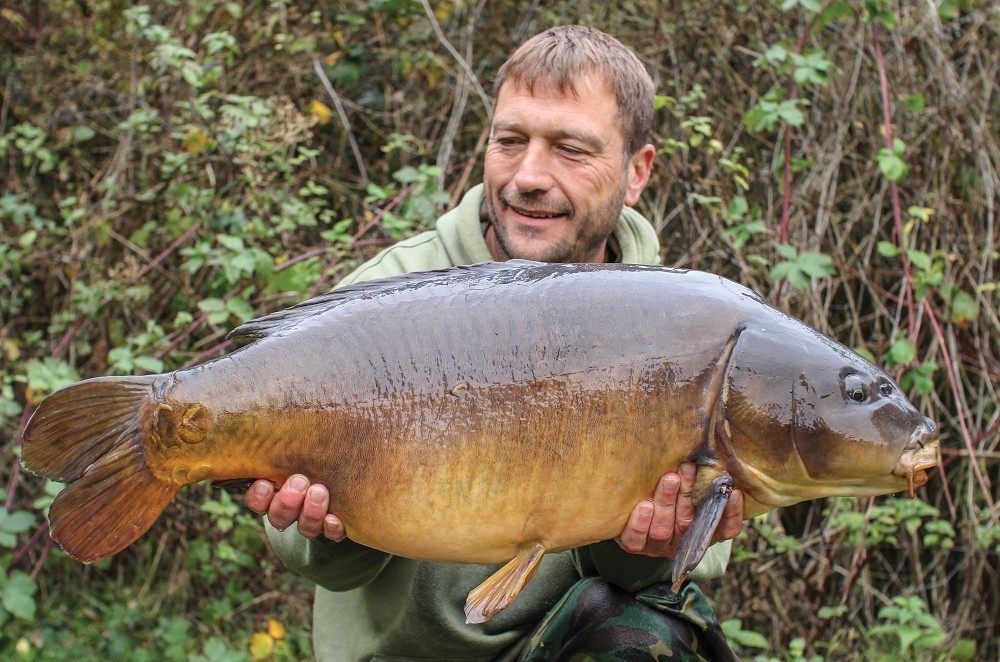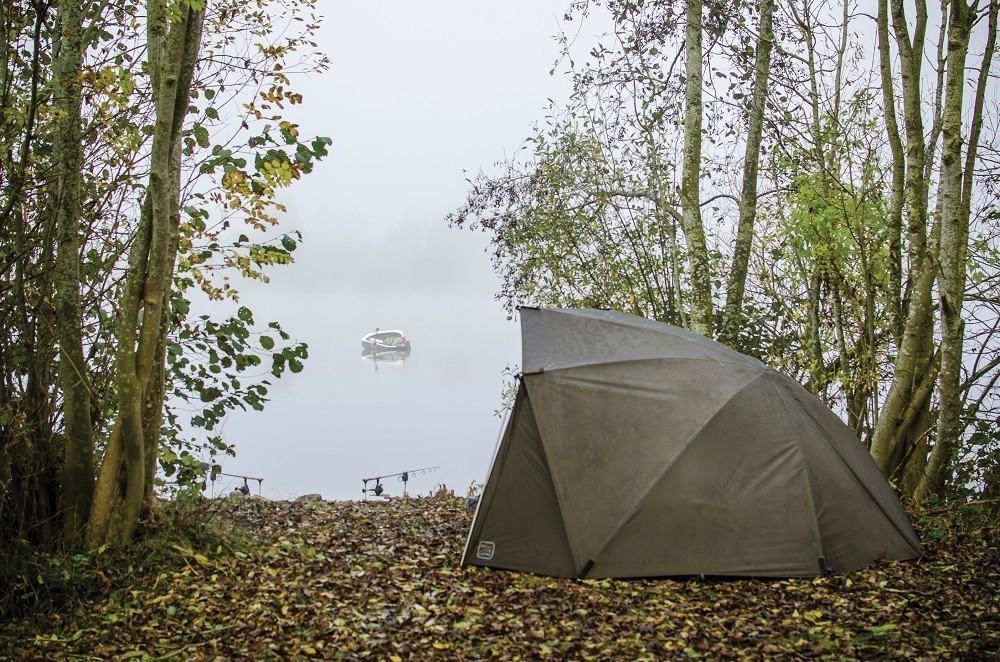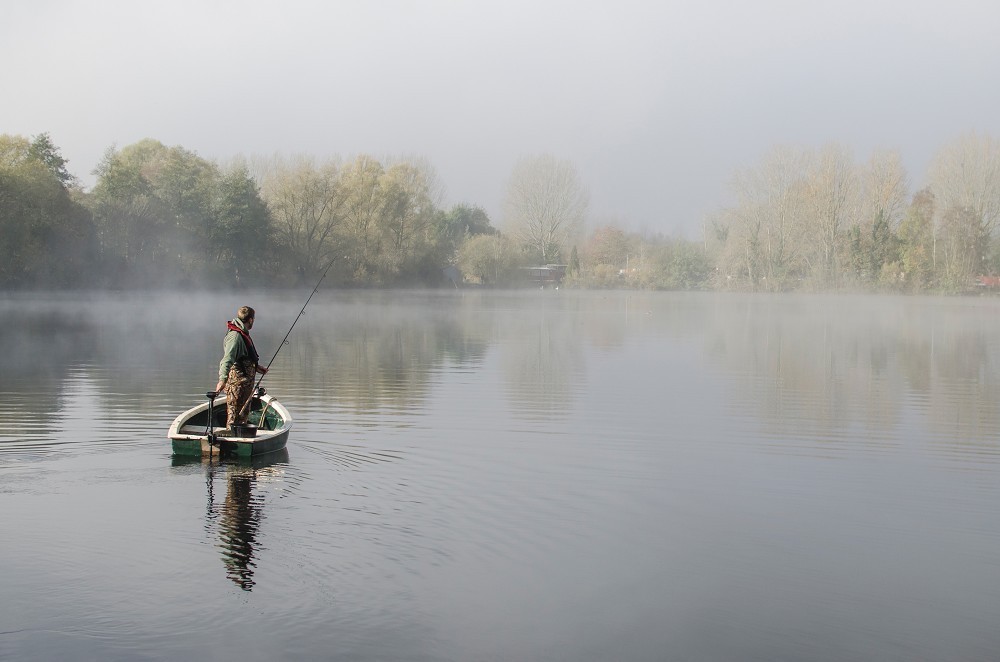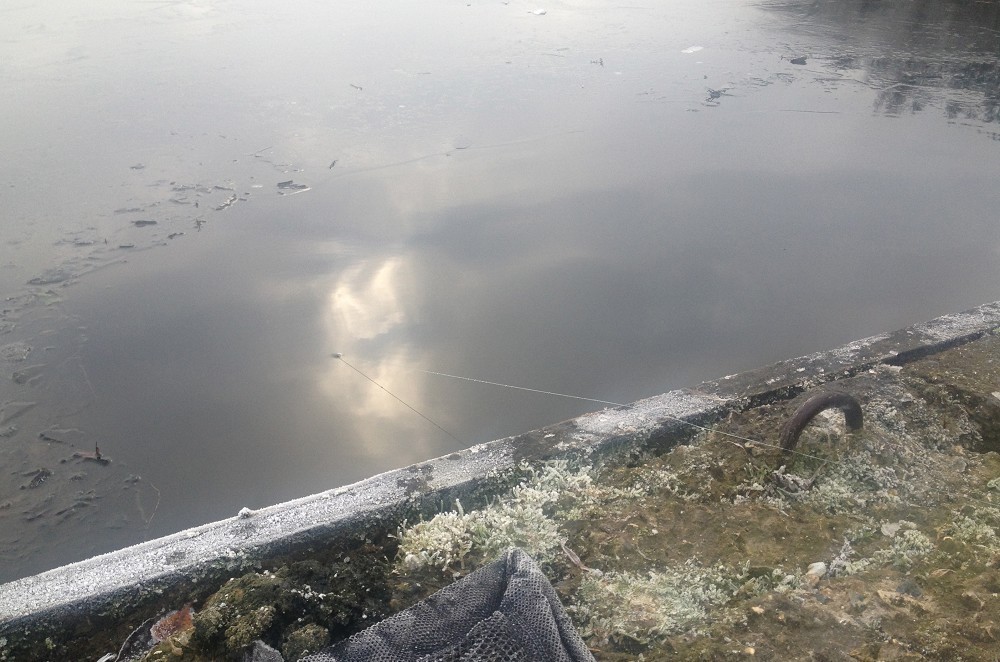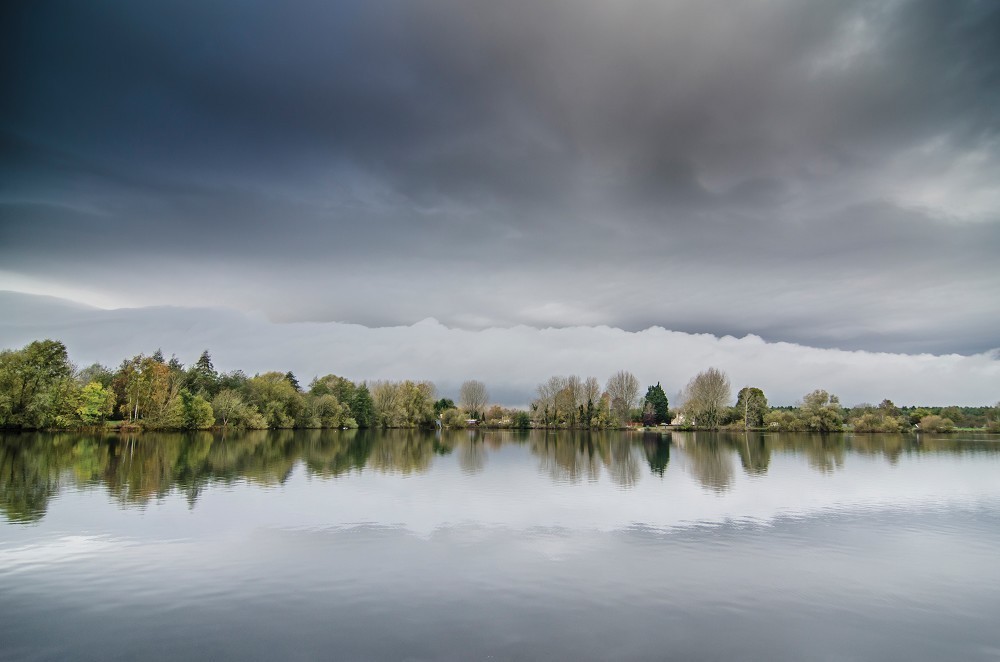The cure for the cold
Wychwood's Jon Mcallister explains his thinking behind targeting carp when the big freeze comes to town...
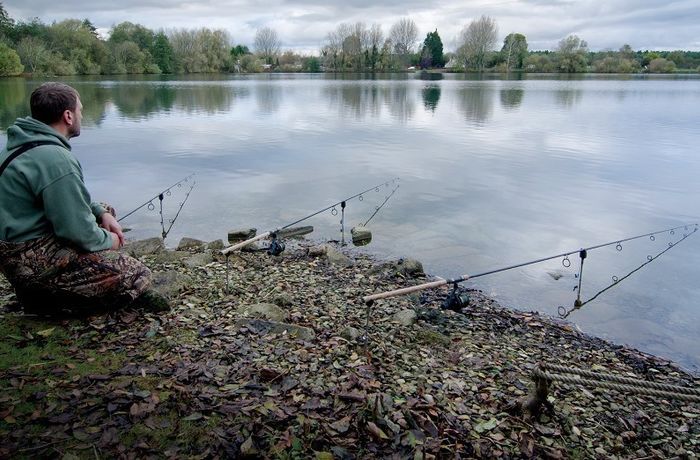
Autumn has become somewhat muddled as a season, not really being the prolonged period of water and air temperatures ‘winding down’ that we were used to a few decades back. Well, winter is exactly the same; aside from the newspapers saying we’re going to have a big freeze that will end humanity, over the past few years our winters here in the UK have literally been a damp squib.
Most notably, the shift into winter is getting later. I can remember in my carp fishing ‘youth’ there was a more definite, clear-cut window – it was cold in October, freezing in November and truly Baltic all the way through to the start of March. These days the changes are much more subtle and often, don’t happen when we expect them to.
The biggest change though is once the clocks go back...
Shorter daylight hours and more fishing without daylight not only changes how we as anglers have to approach our fishing, but it also changes how the fish behave. I can remember my second winter on Wraysbury, when it was very cold for five months of the year, really classic winter stuff. I’d started on there a season or two before in the spring and from the off, I knew I had to do a lot of boat work just to get an idea of where fish could be found. This particular winter it was amazing to witness what the fish were doing in what seemed like a totally lifeless environment. About December time I found a shoal of tench and they were about 20yds out from the bank, swimming around in a circle. It was bizarre with no real rhyme or reason, swimming around over this spot the size of a few yards square. The tench were mid-water but I also saw carp on the bottom that I knew I had to target. I fished it hard, really trying to get the tench to feed, which I thought in turn would prompt the carp to have a go. I fed maggots, joker, hemp, whatever I could get my hands on, but they just ignored what I put down on that spot and continued with this weird behaviour. I noticed marks on their bodies where they’d obviously been rubbing on something as they’d fed. Not one fish, carp or tench, fed on the bait I introduced though and that made me ask questions about where they were going to get these marks, they must have been feeding somewhere!
The previous winter I’d caught carp from about 50yds away from where I was now seeing these tench, and those carp bites always came at the same point in the day, which obviously corresponded with their movement. I’d just not noticed it at the time. However, with the use of the boat I had spotted these tench and carp and it just clicked that these fish were hanging in one spot and moving off to feed, hence why I’d caught fish that previous winter. Whether it was a natural spring or something that they were gathering around, I don’t know, but they were sure to have a routine. Even when the lake froze solid for two months, once it thawed, these tench and carp were still there, swimming in circles over this spot. I started to watch them in the afternoon (they didn’t seemed fazed about me being over the top of them in a boat) and they were moving out between 2–3pm, obviously when the daylight was at its peak. It was really strange behaviour but really made me think about how we look at winter fishing and how we may assume that fish are holed up but will move when they feel they have to feed.
On the flip side, I’ve seen carp holding up in fallen weed, virtually motionless, for weeks on end. They didn’t spook when I went over the top of them. They may have moved a little, but never off the spot. I saw little clear spots nearby that were obvious feeding areas, blatant hand-sized spots that were polished off. Although I never saw them move, they must have drifted out from this weed but I could only guess. I never caught one of these fish.
Feeding times
With fish doing such weird things, it does make you question how on earth we do catch fish in winter. People place a lot of emphasis on feeding times for carp, none more so in winter and what I’ve witnessed over the years backs this up. Sometimes you’re able to set your clock by them: get a bite at 1pm on one day and you can get a bite at the same time the next day or even a few weeks later! The window of opportunity can be immensely narrow.
These short feeding spells lend themselves ideally to small amounts of bait. Obviously, not only small amounts of bait but a bait that’s going to be readily accepted – something blatant like a big boilie isn’t always what the fish is after, regardless of nutritional value. A tiny handful of hemp and corn is perfect for this scenario, especially on waters where boilies have been done to death through the spring, summer and autumn – it’s the perfect attractor. Hemp leaks off loads of attractors and the smell of sweetcorn is immense – I don’t think some types of boilies (especially heavy fishmeals) can match this, especially over a short period of time. Corn and hemp is also eaten easily, passed through a carp’s system without ever filling up. It’s perfect for angling over in my opinion.
Bait application is dependent on stocking density and if you have them front of you. If you’ve got fish on your spot that look like they’re going to stay close by, then by all means put a fair bit in. Birds like tufties will have a bit of the bait anyway, and if there are a few carp, they’ll eat a fair bit. Pre-baiting between sessions is only something I do once I’ve located fish in winter, otherwise I apply bait as-and-when I fish. Hemp is great for identifying if fish are using a spot because there’s too much of it for the birds to clean up, so if it’s all gone then you know fish have been there. That’s when you can channel your efforts in to fishing these areas because you know fish will be there at some point.
There are obviously some baits that become popular in winter: corn, maggots and casters being some of the best. In truth, I hardly ever fish maggots – I know they work but it’s not something I personally have confidence in. Maybe I’m set in my ways but I know a hemp and corn approach works for me, maybe with some boilies, and I’ve caught fish that way so why change?
Just going back to hemp for a moment, the fact that it leaks off lots of oils and flavour instantly creates a link with glugs and flavours that we as anglers can employ. Personally, alcohol-based flavours are the only ones I really use through the cold of winter. Personally, I rarely look to heavy, thick glycerin-based glugs because I don’t have confidence in them, although many anglers do use them to great effect, especially when they combine them with bright, blatant hookbaits like fluoro pop-ups. It’s a personal thing and maybe one day I’ll start fishing that way.
I’m often asked about ‘hotspots’ in winter and how they differ between venues. Small, shallower, pressured waters are where marginal snags will probably be a good starting point, Sutton-at-Hone being a prime example of a water where fishing to these features will probably bring you a bite. On the other hand though, you’ve got your 100-acre-plus lakes like Burghfield where at certain times the fish do frequent the snags in some areas, but I’ve found the most productive areas to be the deeper water towards the middle areas of the open expanses. Silty areas are often where I look to put bait or near a decaying weedbed that offers cover for the carp and a short distance to travel to a feeding spot.
Depth is a massive factor for me in winter carping; if a lake is shallow across its whole area, then like I’ve said, you look for obvious snags and holding areas, but where you have massive variations in depth, that deeper water is where they gravitate to. There’s less fluctuation in water temperature and when the carp are in a dormant state, this is their preferred territory.
Going back to the circling tench spot on Wraysbury, the carp I caught travelled some 50yds or so to feed but I feel that ultimately, the distance a carp may travel in winter is dependent on the weather. Prolonged periods of freezing weather, literally freezing with very little warm sunlight and possibly snow, that’s when the fish are likely to travel far less. But during a long period of brighter conditions during mild weather (as winter turns to spring) this is a time when I feel carp may well search out a different comfort zone from the places they spend while the freeze is on. Moving from one end of the lake to another, even on big expanses of water, is something you will need to be open-minded about.
I won’t say there is an ideal set of winter carping weather conditions because I’ve caught carp in ultra, ultra extreme conditions. I’ve caught carp at times when looking at a lake and its recent form, you just wouldn’t expect a bite – persistence and sticking it out has probably paid off more for me than anything when I’ve done all the leg-work of finding likely looking areas to fish and watching how fish react to the conditions. Just because a lake is frozen doesn’t mean you have to pack up and go home. You can make holes in ice, it may be a mammoth task, especially keeping your lines free of ice, but catching from places like Burghfield when there’s a 94-acre lid of ice is proof that whatever the weather, you CAN catch carp.
Weather-wise, what do I think has the biggest effect on carp in the winter: wind or sunlight? I think they go hand in hand – you can catch carp in any conditions. Obviously, on lakes with distinct shallow areas you can often see fish move when the sun is at its warmest, going back to what I’ve said about feeding spells in the mid-afternoon, but equally there are times on overcast days when the wind seems to get the fish moving. Water temperature probably dictates fish movement more than anything and a rise in temperature can be attributed to sun in the day or just a warm wind from the south.
At the end of the day, winter carp fishing is hard work and there are no guarantees but equally, every day can be productive if you know the water and put the time in. Aside from visual signs of fish, birdlife can play a part in fish location. I’ve got a mad theory about gulls watching fish. They obviously eat fish – carp are too big for them, that’s a fact – but I’m convinced that gulls will watch carp and it’s worth looking at gulls that are acting strange, hovering around one spot. On the Car Park Lake I was convinced that the gulls were sitting over fish that were feeding on the bottom. I could never be truly certain but I’m sure there’s something in it because the birds just acted weird. Gulls usually have this aloof way of just sitting and bobbing around but when there are fish around, they seem to be inquisitive, aware of something moving around underneath them.
There’s plenty written about birds, like swans picking weed up that’s been dislodged by feeding carp – Nigel Sharp has a theory about it that I’m sure he’s covered in ‘Ology before (issues 113 and 116). While there’s still a bit of weed on the bottom (before it’s all died back) this could be a good visual identifier too. The most obvious one is birds spooking off fish – there’s usually lots of crashing around, squawking and you may even see the actual fish come up to the surface.
Carp fishing in winter is very much about doing what you need to do to catch fish. It’s not a case of sitting back and letting conditions beat you. It’s not about occupying your mind to make it through to the end of the session – it’s more about doing things like fish spotting, searching the lake, getting to know it without its summer weed growth, especially if you intend to fish it through an entire year. The prep work in winter of leading around, going out in a boat, that all pays off later in the year. This is all pretty obvious stuff but it’s amazing how many people I speak to who treat winter as being a time when it’s all about luck, rather than putting work in to make something happen. I’ve said it before – the harder the challenge, the greater the reward – and who needs anything more than that?



